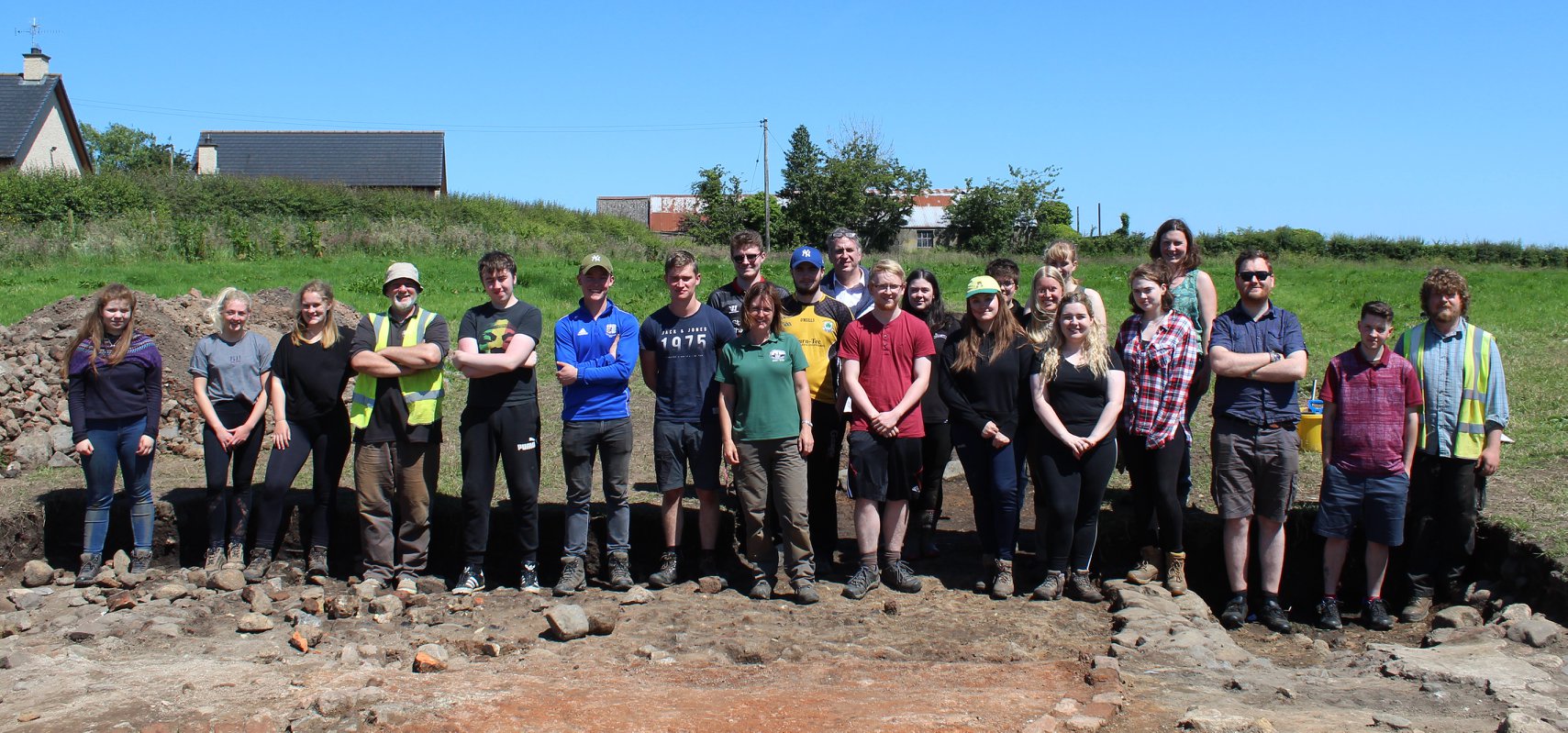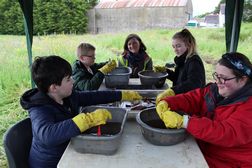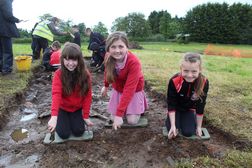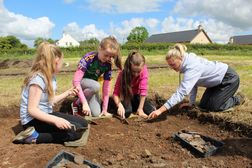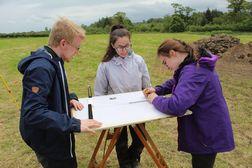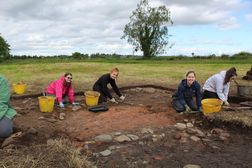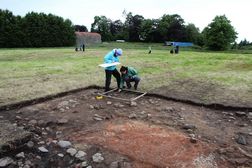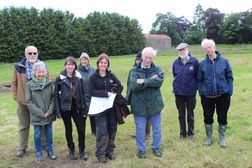Fowler's Pottery
In June 2019 an excavation was carried out at the site of a 19th century pottery, close to Coalisland known as Fowler's Pottery. The site of Fowler’s Pottery is in private ownership and with the kind permission of the landowner the excavation an was conducted as a collaboration between the Lough Neagh Landscape Partnership and Queen’s University Belfast and funded by the National Lottery Heritage Fund Great Places Scheme.
The town of Coalisland gets its name from the abundant coal deposits discovered in the East Tyrone area in the late 17th century. In order reduce the cost of transporting coal from the Tyrone coalfields to Dublin, Coalisland canal was constructed which linked the coalfields with Lough Neagh, via the River Blackwater. Construction of the canal began in 1733 and although progress was slow, it opened in 1787. During the construction of the canal and the re-routing of the River Torrent, the workers came onto a thick bed of clay which was suitable for the manufacture of pottery, tile and draining pipes. This led to the establishment of numerous potteries in the area which were able to avail of the local resources (both clay and fuel) to make their product and the new canal to transport their wares to the market place. Fowlers Pottery, owned by Enoch Fowler was one of the potteries established in the Coalisland area in the 19th century. The Pottery is not marked on the 1st or 3rd edition Ordnance Survey maps, but does appear on the 2nd edition Ordnance Survey map which dates to around 1860. This suggests that the Pottery was in active use for a relatively short period of time between 1840 and 1880. Today the location of the Pottery is a greenfield site with no trace of the associated buildings visible on the ground. The excavation Fowler’s Pottery enabled archaeologists to identify the type of wares manufactured at the Pottery, establish the scale and organisation of the site and locate specific areas such as the kiln and drying room used at different stages in the pottery production process.
Many thanks are due to landowner Wilfred Dilworth and Keith Beattie of Lough Neagh Partnership Limited as well as the National Lottery Heritage Fund ‘Great Place Scheme’ and Mid Ulster District Council who funded the project. Thanks also to local historian James Walshe for sharing his knowledge of the local area and the pottery making industry.
Thank you to all the groups that visited the dig and participated in the excavation. A total of 175 people volunteered on the excavation, this included 127 children from six local primary schools - Gaelscoil Uí Néill, Stewartstown Primary School, St John's Primary School, Edendork Primary School and Holy Family Primary School. Members of Assist Youth Coalisland, work experience students and members of both the Derry & Strabane and the Belfast Young Archaeologists' Clubs also volunteered on the dig.
Thanks to all the other people that visited the site during the course of the excavaation - we were delighted to be able to to share our discoveries with you.
Big thanks to all the Level 1, Queen's Archaeology undergraduate students who worked on the excavation for the duration of the dig. Thanks for all you hard work and enthusiam...despite the rainy June weather!
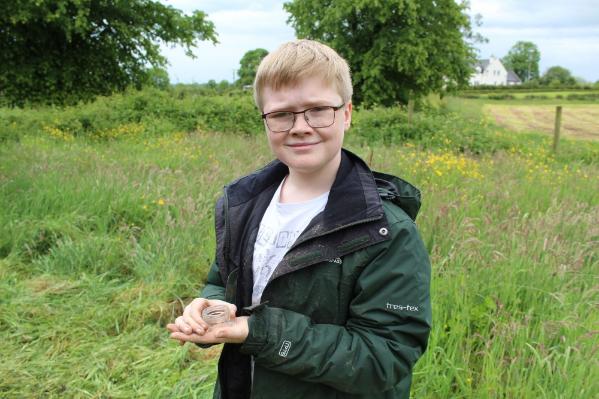
When looking back at the day, I have to say the thing that I enjoyed most, was chatting with other people that had the same drive and excitement about history, and archaeology, which in my school is hard to find. Michael Higgins
YAC Dig it! Competition winner
